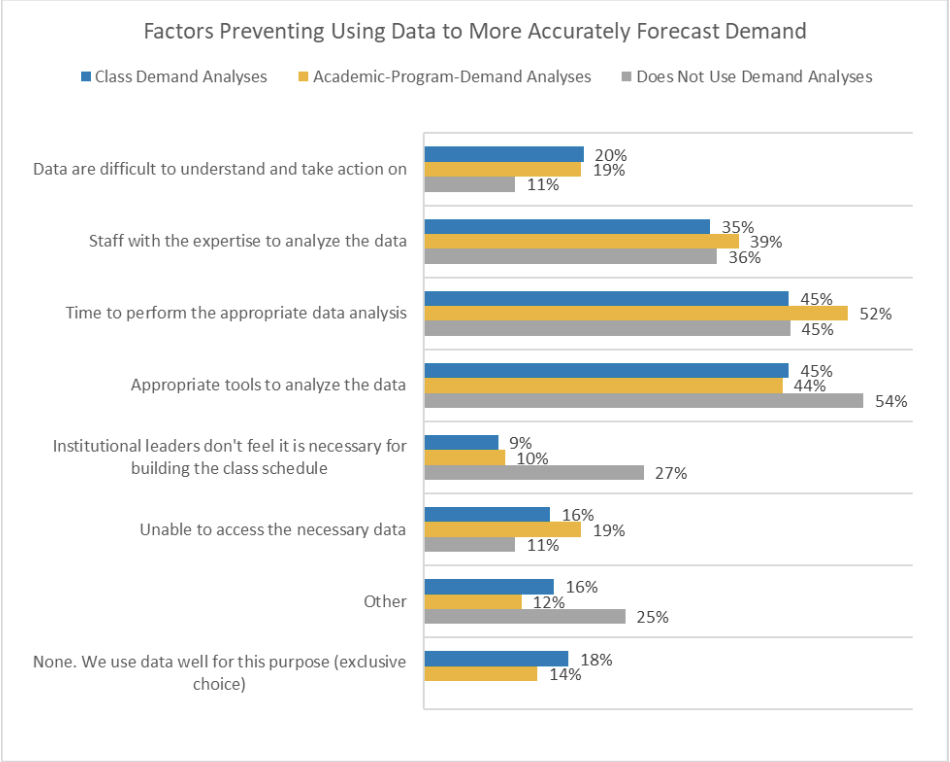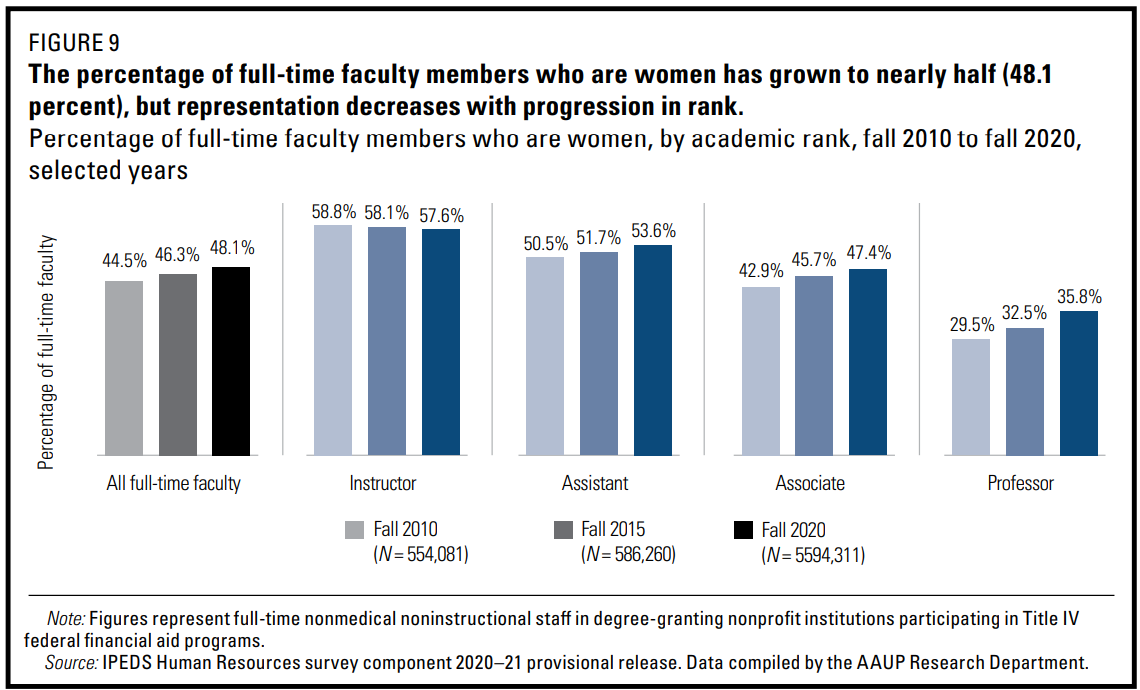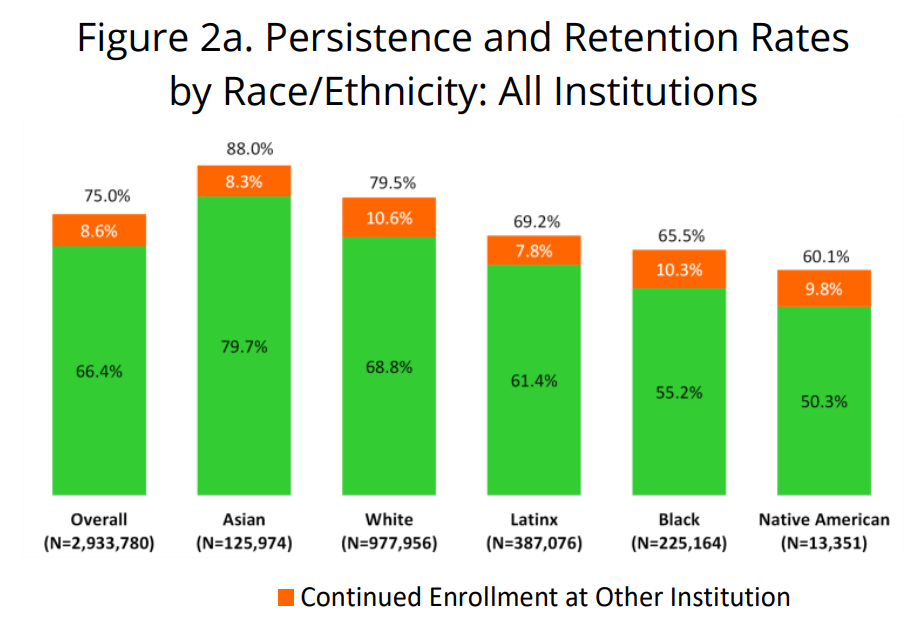Commentary
One of the more curious items to come from deploying the July 60-Second Survey on class and academic demand analyses was a discussion about the definition of the word course in the context of higher education. Often in higher education, we use the terms
course and class interchangeably when talking about the practice of creating a schedule with specific days, times, delivery modalities, and locations for courses and classes. However, there are other common working definitions of the word course.
The first applies to catalog-level information, and the second to a set of classes or a program of study used to obtain a credential. There are also multiple definitions and interchangeable terms for program, schedule, section, and class, among others.
AACRAO Research will post a set of working definitions for these and other terms on the AACRAO website. The working definitions will apply to AACRAO Research surveys and reports. As these continue to develop, I welcome feedback on the definitions.
Please contact me if you have any questions (wendyk@aacrao.org).
AACRAO Research Update
60-Second Survey: Undergraduate Academic Program and Class Demand Analysis
Three hundred and thirty-one undergraduate-serving institutions responded to the survey. The full report release date is August 3 for all signed up to receive AACRAO Research reports. View a sneak peek of some of the data below.
There is no statistical relationship between institutional characteristics (size, type, and control) and whether an institution conducts class and academic program demand analyses. - 27 percent do not conduct class or academic program demand analyses (n = 89).
- 38 percent conduct class and academic program demand analyses (n = 127).
- 28 percent conduct only class demand analyses (n = 92).
- 7 percent conduct only academic program demand analyses (n = 23).
|  |
2022 Benchmark of Undergraduate Class Scheduling
The 2022 benchmark survey deployed on July 25 will be open through August 16. All undergraduate-serving AACRAO primary contacts at U.S. institutions received the survey invitation. As a small token of our appreciation for your efforts to complete these
surveys, the first 250 who complete the survey will receive a $10 GrubHub electronic certificate via email after the survey closing date. The best person to complete this survey is one who is familiar with undergraduate class scheduling practices,
staffing, the use of data, and the use of technology at your institution.
July 27, 2022 Roundtable Discussion on the Role of the Modern Registrar
This roundtable took place this week. The data will shape a white paper on the topic and AACRAO's professional development offerings. Participants responded to the following questions:
- How do you define student-centricity?
- How do you prioritize student-centricity against the need to maintain order in institutional policies and processes?
- Do you feel your role in the institution is to enforce policy and process or to help students navigate policy and process?
- What are the costs associated with not being student-centric? Are these costs the responsibility of the registrar or someone else on campus?
- How do you balance the need to problem solve and navigate within the existing institutional infrastructure against the need to reinvent or add to the infrastructure to address challenges at scale?
- What impact do technology systems have in serving the needs of your learners?
- Similarly, how valuable are technology systems in helping to streamline and simplify the work of your team?
We will likely also invite others who could not participate in the roundtable discussion to record their insights on these questions later this summer or early fall.
I also learned a new word today, teleology, during this roundtable. At its simplest, teleology refers to attention to purpose rather than the cause. One of the participants used this term to describe their institution's approach to examining processes
and policies. It became the "word of the day" for the group.
Down the Road a Bit
- In September, chief admissions officers (CAdOs) will receive an invitation to participate in a Career Profile Survey. This profession was last surveyed in 2019. Given the report highlighted below on how more than half of those surveyed intend to leave
their position in higher education within a year, we hope to gain insights from CAdOs. The goal is to assess if they feel the same and, if so, why. We also seek to understand their career path and current portfolio of responsibilities.
- The topics related to class scheduling led some to ask about student practices around registration and student use of class planners. It has been some time since we conducted a benchmark on registration practices and have added it to the queue to
be completed sometime in 2023.
Current Higher Education Research and Related Topics
Faculty Salary Survey Shows Dramatic Drop
A survey from the American Association of University Professors found that average full-time faculty salaries decreased (when adjusted for inflation) by 5 percent in the 2021-22 academic year. Other key points included:
- College and university employment has nearly reached pre-Covid levels.
- Real wages fell below the levels of the great recession.
- Salary increases for full-time faculty fell well below inflation.
- Full-time women faculty earn less than men at all levels.
| 
|
Survey Shows Higher Education Facing a Huge Employee Turnover
A new survey from the College and University Professional Association for Human Resources found that more than half of respondents said they would likely look for other employment within the following year. The survey analyzed data from 3,814 higher education
employees. Key points included:

| - 57.2 percent of respondents were somewhat likely, likely, or very likely to seek work elsewhere within the following year.
- While seeking a pay/salary increase was the most cited reason (75.9 percent of respondents) for exploring new opportunities, a close second reason (42.9 percent of respondents) was wanting to work remotely.
- While 63.1 percent of respondents reported working "completely or mostly on-site," the vast majority—70.5 percent—believe that they can perform most of their work duties remotely.
|
Research Report Leads to a Facilitated Symposium
A report (previously featured in this blog) from the National Association for College Admission Counseling (NACAC) will be the basis for the convening of higher education leaders next spring. The convening intends to help higher education leaders develop
an actionable framework to address race and racism in college admissions. The symposium will be in March, with more details to come.
New Study Finds that Women Academics are Credited for their Work in Science Less than Men
A new study published in Nature explores the well-known gap between women and men in the sciences. While several factors may contribute to this, the report finds that women are significantly less likely to be credited with authorship than men. The study
used multiple sources of data, including:
- Large-scale administrative data on research teams, team scientific output, and attribution of credit
- An extensive survey of authors
- Qualitative responses to the survey
The authors conclude, "at least some of the observed gender gap in scientific output may not be due to differences in scientific contribution, but to differences in attribution."
Report on Student Persistence Shows Mixed Results
| A new report from the National Student Clearinghouse Research Center finds
that student persistence rose almost to pre-pandemic levels. The report focused on first-time college students. The study found that 75 percent of students who started college in the fall of 2020 returned for their second year. |  |
Other key points included:
- Community colleges and private for-profit four-year institutions saw increases in persistence and retention, while other four-year institutions experienced small drops.
- Persistence rates increased in all major racial/ethnic groups except Native American students, who saw a 2.8 percent decline.
- Latinx students had a small increase in persistence following a major decline the year prior.
- Overall persistence rates improved, even as first-time students declined sharply (-9.9 percent or 255,000 fewer students compared with fall 2019). Community colleges accounted for 58 percent (146,700 fewer students) of the decline.
EDUCAUSE Invitation to a Webinar for their latest Research
A webinar on August 9 will present the results of the EDUCAUSE 2022 Horizon Report on technology in higher education. The webinar is free to EDUCAUSE members and $79 for non-members.
Updates from the Community College Research Center (CCRC)
CCRC recently released a couple of journal articles, a fact sheet, and a working paper.
- Fact Sheet | Community College STEM Pathways
- Journal Article | "Lost in the Shuffle": How Relationships and Personalized Advisement Shape Transfer Aspirations and Outcomes for Community College Student
- Journal Article | Does Taking a Few Courses at a Community College Improve the Baccalaureate, STEM, and Labor Market Outcomes of Four-Year College Students?
- Working Paper | A Strategy for Estimating the Effects of Whole-College Guided Pathways Reforms in Community Colleges